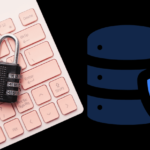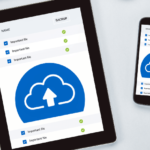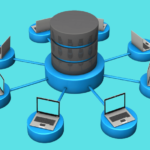
SQL Performance Monitoring optimizes your database operations, ensuring swift query responses, robust system health, and a seamless user experience in data-driven environments.
Monitoring the performance of your SQL database is an essential aspect of maintaining smooth operations and optimal server efficiency. SQL performance monitoring involves tracking the various performance metrics of the database, analyzing the data, and addressing any performance issues that arise. By doing so, you can ensure that your database is functioning at its best and prevent lagging transactions and suboptimal server performance.
SQL performance monitoring tools and techniques can help make this process easier and more effective. There are various tools available in the market that can monitor performance metrics and provide alerts when there are issues.
Key Takeaways
- Monitoring SQL performance is crucial for maintaining smooth operations and optimal server efficiency.
- SQL performance monitoring tools and techniques can help make this process easier and more effective.
Why is SQL Performance Monitoring Important?
SQL performance monitoring is the process of tracking and analyzing the behavior and usage of a database to ensure optimal performance. It involves identifying performance issues, measuring critical performance metrics, and implementing strategies to improve performance. Monitoring tools allow you to gain insight into how your SQL queries perform and identify slowdowns before they become critical issues.
Performance problems are one of the biggest challenges faced by database administrators. Slow queries, high CPU usage, disk I/O, and memory utilization can all impact the performance of your database and the overall user experience. Real-time monitoring and performance tuning can help to identify and resolve these issues, minimizing the impact on the end-users.
By monitoring performance metrics such as response time, throughput, and resource utilization, you can pinpoint the root cause of performance problems and take corrective action. Effective SQL performance monitoring helps prevent downtime, maintains server efficiency, and enhances the overall user experience. Monitoring tools also allow you to track the performance of your database over time, identifying trends and establishing baselines for optimal performance.
Without proper monitoring, you may miss critical issues that can impact the overall stability and reliability of your application. Regularly tracking performance metrics and identifying the root cause of slowdowns is essential to ensuring the optimal functioning and longevity of your database. SQL performance monitoring tools are therefore an essential part of any database administrator’s toolkit.
Benefits of Effective SQL Performance Monitoring

Effective SQL Performance Monitoring is crucial for identifying performance bottlenecks and maintaining optimal server performance. Organizations that implement SQL performance monitoring solutions benefit from various advantages including:
- Enhanced User Experience: By monitoring performance metrics, organizations can identify and address slow running or unresponsive queries, leading to higher application responsiveness, improved user experience, and increased customer satisfaction.
- Improved Server Efficiency: SQL performance monitoring allows for the identification of resource-intensive queries that can negatively impact server performance. By optimizing these queries or database configurations, organizations can significantly improve server efficiency and maximize system capacity.
- Faster Query Execution Times: With the help of performance metrics and monitoring tools, developers can preemptively identify areas that require optimization, ensuring faster query execution times and improved application response times.
- Reduced Downtime: By proactively monitoring performance metrics, developers can identify and address performance issues before they snowball into major problems, preventing extended periods of system downtime.
Overall, effective SQL performance monitoring ensures that database systems operate efficiently and are available when required. Real-life case studies and success stories reinforce the need for such solutions. At HireSQL, we provide dedicated SQL developers who specialize in SQL performance monitoring, equipping your organization with the necessary tools and expertise to optimize your database performance.
Key Performance Metrics to Monitor

SQL performance monitoring involves analyzing various performance metrics to identify bottlenecks and improve database efficiency. The following are some of the key performance metrics that should be monitored:
| Metric | Description |
|---|---|
| Query execution time | The time taken for a query to execute |
| CPU usage | The amount of CPU used by the database server |
| Memory utilization | The amount of memory used by the database server |
| Disk I/O | The amount of input/output operations performed by the database server on the disk |
| Lock wait time | The time taken for a query to acquire a lock |
| Response time | The time taken for a user to receive a response from the database |
| Index usage | The usage of database indexes by queries |
These metrics can be monitored using various SQL performance monitoring tools and techniques.
Example SQL code:
SELECT query_execution_time, cpu_usage, memory_utilization, disk_io, lock_wait_time, response_time, index_usage FROM performance_metrics WHERE date = '2023-09-01';
By analyzing these performance metrics, you can identify areas that need improvement and take necessary actions to optimize database performance.
SQL Performance Monitoring Tools

There are several SQL performance monitoring tools available on the market, each with its own set of features, capabilities, and benefits. Some popular tools include:
| Tool | Description |
|---|---|
| SQL Monitor | A comprehensive tool designed to monitor and optimize SQL server performance. Features include customizable alerts and real-time monitoring of critical metrics. |
| SQL Sentry | An all-in-one performance monitoring tool that provides monitoring, diagnosis, and optimization solutions for SQL servers. Features include application and query performance monitoring, alerting, and analysis capabilities. |
| Idera SQL Diagnostic Manager | A monitoring tool that provides real-time performance monitoring, analysis, and tuning solutions for SQL servers. Features include performance trend analysis, customizable alerts, and capacity planning tools. |
When selecting a monitoring tool, it’s important to consider factors such as scalability, ease of use, and cost-effectiveness. It’s also critical to ensure that the tool is compatible with the specific SQL server version being used.
Some organizations may choose to use multiple monitoring tools to cover all of their monitoring needs. For instance, one tool may be used to monitor server performance, while another is used to monitor query performance. Ultimately, the choice of monitoring tool(s) will depend on the specific performance metrics that need to be tracked and the level of expertise available within the organization.
Example SQL code:
SELECT TOP 10 CustomerID, SUM(OrderTotal) AS TotalSales FROM Orders GROUP BY CustomerID ORDER BY TotalSales DESC
This SQL code example demonstrates a query that could benefit from performance monitoring. By tracking metrics such as query execution time and CPU usage, it’s possible to identify the root cause of any performance issues and optimize query performance accordingly.
Implementing SQL Performance Monitoring
Implementing SQL performance monitoring can be a daunting task, but with the right tools and approach, it can significantly improve database operations and prevent performance issues. Here are some best practices for implementing SQL performance monitoring:
1. Choose the Right Monitoring Tool
There are many monitoring tools available in the market, each with its own set of features and capabilities. It’s important to choose a tool that aligns with your business needs and budget. Some popular SQL performance monitoring tools include SolarWinds Database Performance Analyzer, Datadog, and Nagios.
2. Define Baseline Performance Metrics
Before implementing SQL performance monitoring, it’s important to identify baseline performance metrics. These metrics will serve as a benchmark to measure future performance and identify changes. Monitor metrics such as CPU usage, memory utilization, and query execution time.
3. Configure Alerts
Configure alerts to notify you when performance metrics exceed predefined thresholds. This will help you identify issues in real-time and prevent them from causing server downtime or other negative impacts.
4. Analyze Performance Metrics Regularly
To effectively monitor SQL performance, analyze performance metrics regularly. This will help you identify patterns and trends that can point to potential performance issues. Analyze metrics such as disk I/O, network latency, and SQL transaction logs.
5. Conduct Performance Tuning Exercises
Identify bottlenecks and conduct performance tuning exercises to optimize SQL performance. This can include optimizing indexes, rewriting SQL queries, or redesigning database schema.
By following these best practices, you can implement effective SQL performance monitoring and prevent performance issues from affecting your database operations. If you need help, consider partnering with a company like HireSQL that can provide dedicated SQL developers with expertise in performance monitoring and optimization.
Common Challenges in SQL Performance Monitoring

While SQL performance monitoring is crucial for maintaining efficient database operations, there are several challenges that can arise during the process.
One of the common challenges is identifying the root cause of performance problems. SQL performance issues can be caused by various factors, including poorly written queries, insufficient hardware resources, or configuration errors. Monitoring tools can help identify performance issues, but it takes a skilled developer to address and rectify them.
The management of large datasets is another challenge faced during SQL performance monitoring. As databases grow in size, queries can become more complex and resource-intensive. This can result in slow query execution times and decreased server efficiency. Performance tuning exercises and implementing best practices can help address this challenge.
Dealing with complex queries is yet another challenge. Complex queries can take longer to execute, affecting the overall performance of the database. Tuning and rewriting queries can help improve their performance.
Hiring dedicated SQL monitoring experts can help overcome these challenges. These developers have extensive experience in performance monitoring and optimization. Outsourcing SQL developers can be beneficial for companies that lack the in-house expertise needed to identify and address performance issues.
Hiring SQL Performance Monitoring Experts
While implementing SQL performance monitoring can be a valuable investment for companies, it can also be a complex and time-consuming process. Therefore, some organizations choose to outsource this task to experts who are well-versed in SQL programming and performance monitoring.
By hiring dedicated SQL performance monitoring experts, companies can ensure that their databases are running optimally while freeing up their in-house resources for other critical tasks. Outsourcing to a company like HireSQL, which provides English-speaking dedicated SQL developers, can be beneficial for companies that don’t have the skills or resources to handle this task in-house.
Our team of experts has extensive experience in SQL performance monitoring and can help identify bottlenecks and optimize database performance. With our services, companies can focus on their core competencies and leave the technical details of SQL performance monitoring to us.
If you’re interested in outsourcing your SQL performance monitoring, contact us today.
Best Practices for SQL Performance Monitoring
Effective SQL performance monitoring requires a combination of tools, techniques, and best practices. Here are some best practices to keep in mind:
- Regular monitoring and analysis: Regularly monitoring your database performance metrics can help you identify trends and potential issues before they become major problems.
- Set up automated alerts: Automated alerts can help you stay on top of critical issues as they arise. Configure alerts to notify you when specific performance metrics exceed predetermined thresholds.
- Conduct performance tuning exercises: Regularly conducting performance tuning exercises, such as query optimization and index rebuilding, can help you improve database performance and prevent issues from arising.
- Stay updated with the latest tools and techniques: The field of SQL performance monitoring is constantly evolving. Stay up-to-date with the latest tools and techniques to ensure you’re getting the best possible performance from your database.
By following these best practices, you can ensure that your SQL performance monitoring efforts are effective and yield the best possible results.
If you’re looking for a team of dedicated SQL developers to help you with your performance monitoring needs, HireSQL can help. Our developers are highly skilled and experienced in all aspects of SQL performance monitoring, and can help you get the most out of your database. Contact us today to learn more.
Conclusion
The importance of effective SQL performance monitoring cannot be overstated. By regularly monitoring performance metrics such as query execution time, CPU usage, memory utilization, and disk I/O, companies can identify and address performance issues before they escalate and cause downtime or delays in transactions.
There are a variety of SQL performance monitoring tools available in the market that cater to different needs and budgets. However, effective implementation of these tools requires an understanding of best practices such as establishing baseline performance metrics, configuring automated alerts, and conducting regular performance tuning exercises.
If you’re a company lacking in-house SQL expertise, outsourcing SQL developers who specialize in performance monitoring can be a smart choice. HireSQL offers dedicated SQL developers who are fluent in English and can help you optimize your database performance with the latest monitoring tools and techniques.
Don’t let poor database performance affect your business operations. Take actionable steps to implement effective SQL performance monitoring and improve your server efficiency, query execution times, and user experience.
FAQ

Q: What is SQL performance monitoring?
A: SQL performance monitoring refers to the process of tracking and analyzing the performance metrics of a SQL database system. It involves monitoring various factors such as query execution time, CPU usage, memory utilization, and disk I/O to ensure optimal performance and identify any bottlenecks or issues.
Q: Why is SQL performance monitoring important?
A: SQL performance monitoring is crucial for maintaining the smooth operation of a database system. It helps identify and address performance issues, preventing slow and lagging transactions. By monitoring performance metrics, businesses can optimize server efficiency, improve user experience, and reduce downtime.
Q: What are the key performance metrics to monitor in SQL performance monitoring?
A: In SQL performance monitoring, it is important to monitor metrics such as query execution time, CPU usage, memory utilization, disk I/O, and more. These metrics provide insights into the health and efficiency of the database system, allowing for the identification of bottlenecks and performance improvement opportunities.
Q: What are some SQL performance monitoring tools available?
A: There are various SQL performance monitoring tools available in the market. Some popular options include SQL Monitor, SolarWinds Database Performance Analyzer, and Dynatrace. These tools offer features such as real-time monitoring, performance analysis, and alerting capabilities to help businesses optimize their SQL database performance.
Q: How can SQL performance monitoring be implemented?
A: Implementing SQL performance monitoring involves several steps. Best practices include setting up monitoring tools, configuring alerts for critical metrics, establishing baseline performance metrics, and regularly analyzing the collected data. It is also important to conduct performance tuning exercises based on the insights gained from monitoring.
Q: What are some common challenges in SQL performance monitoring?
A: Common challenges in SQL performance monitoring include identifying the root cause of performance problems, managing large datasets, and dealing with complex queries. These challenges require expertise and proper troubleshooting techniques to overcome. It is important to have strategies in place to address these challenges effectively.
Q: What are the benefits of effective SQL performance monitoring?
A: Effective SQL performance monitoring offers several benefits, including improved server efficiency, faster query execution times, enhanced user experience, and reduced downtime. By identifying and addressing performance issues promptly, businesses can ensure the optimal functioning of their database systems and achieve better overall performance.
Q: Should I hire SQL performance monitoring experts?
A: Hiring dedicated SQL performance monitoring experts can be beneficial, especially for companies that lack in-house expertise. These experts can provide specialized knowledge and experience in monitoring and optimizing SQL performance. Companies like HireSQL offer expert SQL developers who can help businesses improve their database performance.
Q: What are some best practices for SQL performance monitoring?
A: Best practices for SQL performance monitoring include regularly monitoring and analyzing performance metrics, setting up automated alerts for critical issues, conducting performance tuning exercises to address bottlenecks, and staying updated with the latest monitoring tools and techniques. Following these practices helps businesses optimize their SQL database performance.
External Resources
https://en.wikipedia.org/wiki/Query_rewriting
https://www.sqlshack.com/how-to-collect-performance-and-system-information-in-sql-server/
James is a highly acclaimed author renowned for his extensive experience in the realm of data development and architecture, offering valuable insights to the data industry through his compelling literary works. Residing in the charming city of Oxford, he embarked on an illustrious academic journey at Oxford University, where he delved into the intricate world of computer science. This foundation served as the catalyst for his exceptional career.
After completing his studies, James embarked on a professional path that led him to renowned technology giants. He first honed his skills as a data developer at Microsoft, where he showcased his prowess in designing and implementing robust data solutions. His innovative contributions played a pivotal role in enhancing data management processes, solidifying his reputation as a meticulous and forward-thinking professional.
Seeking new challenges and broader horizons, James embarked on a transformative journey at Amazon Web Services (AWS). In this influential position, he leveraged his profound understanding of data architecture to shape cutting-edge solutions for clients. His leadership and technical acumen enabled businesses to harness the power of cloud computing and revolutionize their data management practices, further solidifying his status as an industry authority.







